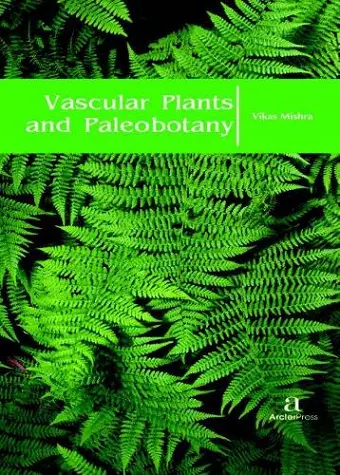Vascular Plants and Paleobotany
Format:Hardback
Publisher:Arcler Education Inc
Published:30th Nov '16
Currently unavailable, our supplier has not provided us a restock date

Paleobotany is a field of paleontology that studies plants throughout geologic history, and is primarily concerned with the fossil record and evolutionary history of plants. Vascular plants also known as tracheophytes and also higher plants, form a large group of plants that are defined as those land plants that have lignified tissues for conducting water and minerals throughout the plant. They also have a specialized non-lignified tissue to conduct products of photosynthesis. Vascular plants include the clubmosses, horsetails, ferns, gymnosperms and angiosperms. Paleontology is the science concerned with fossils, the physical evidence of prehistoric life—including plants, animals, and microorganisms—on the earth. Paleobotany is of importance primarily because the record of fossil plants helps scientists understand the long process of plant evolution. Paleobotany focuses on plant fossils, including algae, fungi, and related organisms, as well as mosses, ferns, and seed plants. As most organisms decompose rapidly after death, their preservation in nature is a rare event. Most individuals are not represented in the fossil record, and even many species that must have existed have vanished without a trace. Normally the plant dies and it soon starts generation. This generation continues till the entire body is broken into single chemical compound. Sometimes in certain circumstances degeneration of plant body stops and part of body remains in visible form. These remains are known as fossils. Plant fossils are present in rocks composed of sediments deposited in water. These stratified rocks are super imposed upon one another. These rocks are built of sediment that accumulate in bottom of seas lakes, swamps, flooded valleys. Rock formation is co related with geological approach in the subject paleobotany. In fact fossils are the makers of geologic tume.From an evolutionary point of view, plants have ensued from filamentous green algae dwelling in shallow waters, perhaps around 500 to 600 million years ago. In around 100 to 200 million years later, land plants seems to have diversified, leading to development of vascular plants, which eventually diversified into seed plants and flowering plants, forming the vast expanse of forests on the planet earth. This book is not a comprehensive text book discussing the evolutionary extant of all plants, neither it is a complete discussion on the topic of paleobotany. It is simple effort to compile...
ISBN: 9781680945195
Dimensions: unknown
Weight: unknown
280 pages